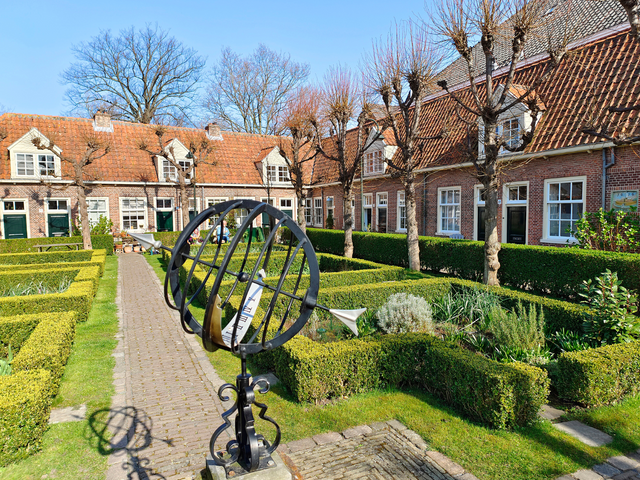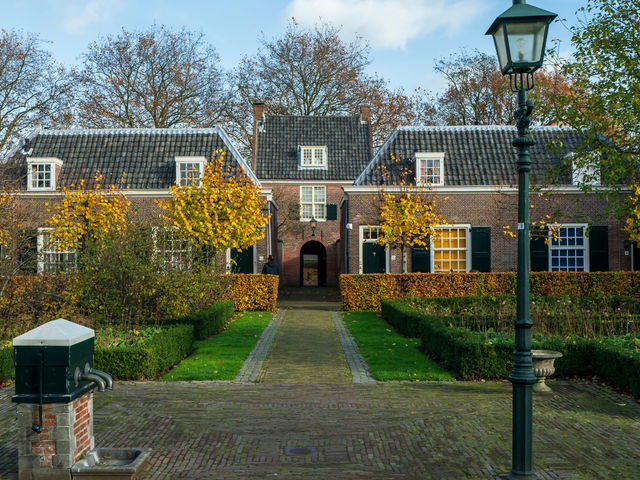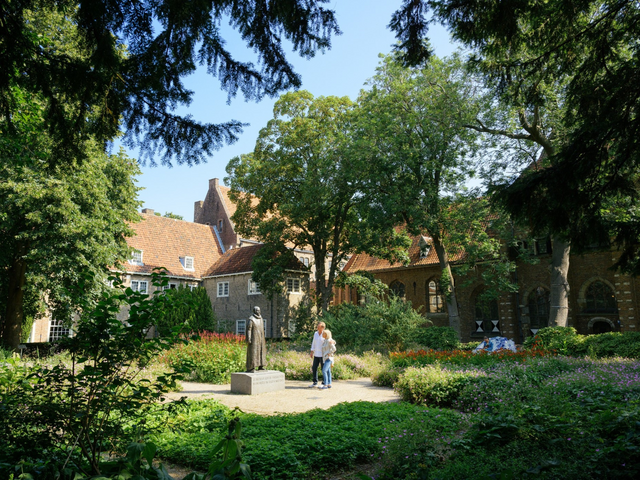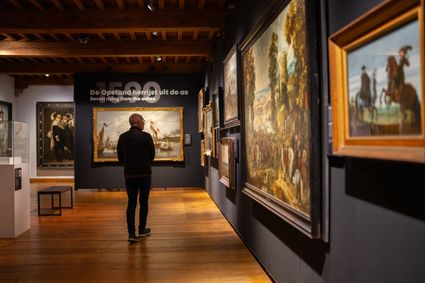In Delft, you can admire beautiful historic courtyards. These hidden gems are sometimes well hidden and reflect history over the years. Walk through Delft, go back in time and discover the places where famous Delft painters got their inspiration.
Klaeuwshofje
Named after the brewery In De Claeuw, on Koornmarkt, the Klaeuwshofje was founded in 1605 by the Uyttenhage van Ruyven couple. Often, hofjes are founded as a legacy of his or her founder, which is not the case with this hofje. In fact, this hofje was built when the couple was still alive. A lot has changed over the years, but there has always been a connection with the city; from the hofje you have a beautiful view of Delft's church towers.

Hofje van Gratie
Not much further away, the Hofje van Gratie can be found. This courtyard was for single women and elderly men and was founded in 1571. By order of the mayor, six houses were built on the Geer in Delft in 1575. The houses and buildings were hit in 1654 by the ‘Delft Thunderclap’, the big explosion in the powder magazine. Since 1660, the courtyard can be found on the Van der Mastenstraat where it now consists of seven houses. When you visit, you can also admire the old family weapons.
Hofje van Pauw
Pauw's hofje (courtyard) was founded in 1707 by Elisabeth Pauw who was married to mayor Johan van der Dussen. Because of three family capitals, a spacious monumental courtyard could be built. The entrance to the courtyard is a gatehouse containing a regent's room. This was a representative room where the board of the courtyard met. In the garden, which is huge for a courtyard, there is a mulberry tree that is 150 to 200 years old! Currently, the courtyard has a beautiful function. It is meant for the protective living of mentally disabled people.

Bagijnhof
A special feature of the Bagijnhof is that its founders built the houses with their own capital. As a result, there is less unity than in other courtyards. Because of its secluded location, this courtyard radiates peace and quiet and used to be very safe. Don't forget to take a look at the secret church at number 21!
Prinsenhof
The Prinsenhof is perhaps the most famous court in Delft. The former Agatha convent was the city court of our ‘Father of the Fatherland’
William the Silent. The history of this courtyard goes way back when it was, most likely, a medicinal convent garden. After that, it has had many different uses. Nowadays, it is home to the Prinsenhof Delft Museum, and the Prinsenkwartier.
Attention! Museum Prinsenhof Delft will be temporarily closed for renovations from 6 January 2025. For more information, please visit the website of Museum Prinsenhof Delft.

Stadswandeling langs de Delftse Hofjes
Want to visit the courtyards and learn even more about these beautiful, and sometimes hidden, gems? Then join a guided city walk. During a tour, you will learn even more about the origins of the hofjes You can book the tour at Happy Day Tours or Gilde Delft.



